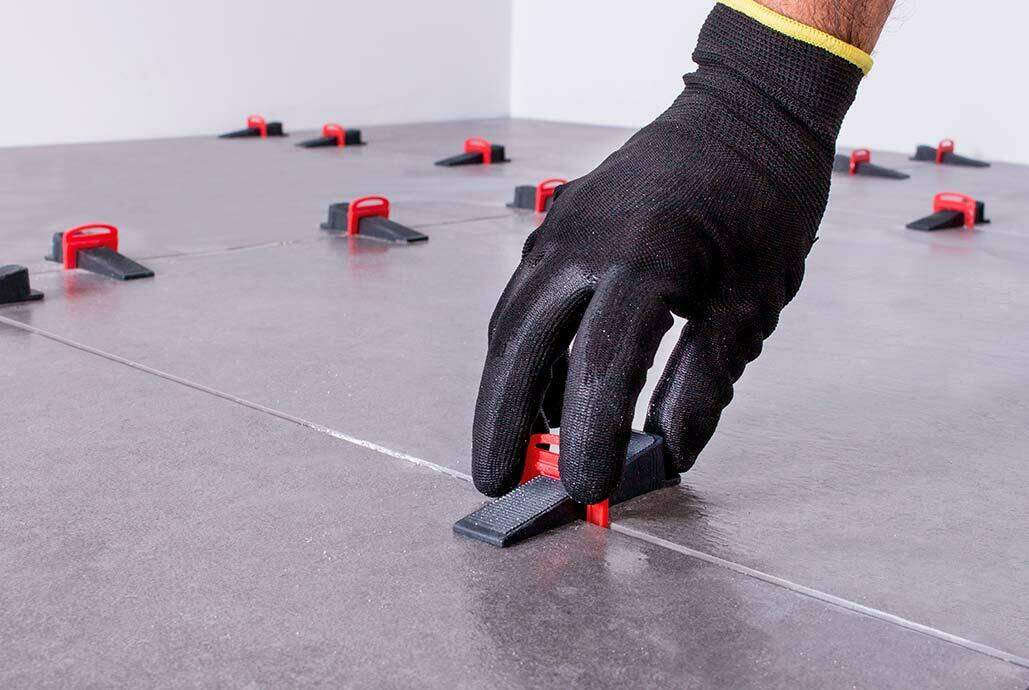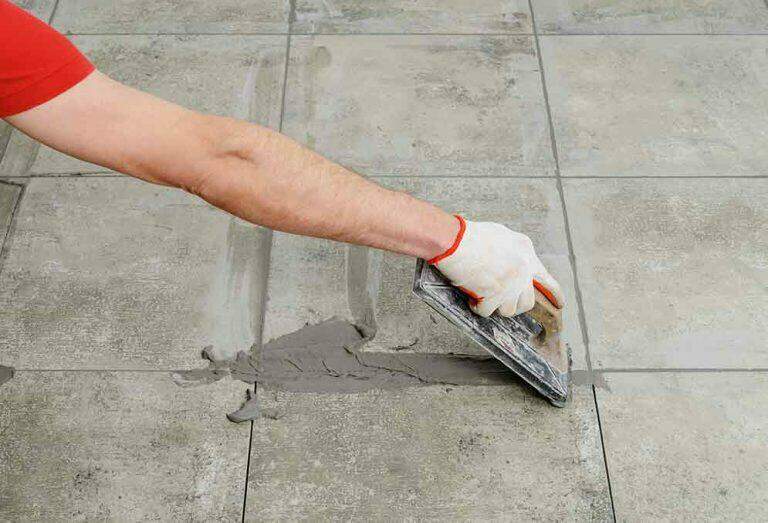When laying ceramic or porcelain tile, one of the best surfaces you can lay it on is concrete. Today we are going to see how to lay floor tiles on concrete!
If prepared correctly and laid well, a concrete bed is a great surface to work on. It provides minimal problems and will last for many years. To find out how to lay floor tiles on concrete, read on!


WHAT TO TAKE INTO ACCOUNT WHEN LAYING STONEWARE ON CONCRETE
There are a number of important factors that must be taken into account when laying material such as stoneware on concrete to ensure your installation is a success.
THE CURING THE CONCRETE
One of the most common mistakes when laying tile on concrete is not allowing for enough curing time. Curing concrete is defined as leaving enough time and having the right moisture and temperature to allow the concrete to achieve the desired properties for its intended use.
The concrete will begin to set almost immediately after being unloaded or poured into the formwork. However, this process is long and can often take many days or even months until it has fully dried. It’s important that this is taken into consideration and enough time is given to achieve a stable infrastructure. The most common recommendation from manufacturers is to wait at least 28 days for the concrete curing process to be complete before beginning any coating work.
PREPARATION IS KEY
When working on any surface, it’s important to make sure that it is properly prepared. This means that it must be totally clean. Concrete is no exception. In order to achieve a good bond to place your stoneware, you must start here. Make sure your surface is free of any dust, dirt, and debris.
Ideally, use a field vacuum, such as RUBI’s AS-30 PRO vacuum cleaner.

REMOVING IMPURITIES
The presence of greases, oils or chemical products in the concrete have a high risk of causing problems when it comes to placing stoneware on it.
Oils or greases can make easily cause adhesive problems with your mortar and make the tiles easily peel off after you lay them.
REMOVING UNEVENNESS
Often enough, some of your concrete will seep into the slits of the plates used for the formwork while setting. This can leave you with traces or hardened concrete on top of the surface.
Remove these to make sure your surface is level and to prevent issues further down the line.
To do this, the ideal tool to use is a diamond grinding cup, which can be found in the RUBI catalogue. It will help you obtain an even surface with the right flatness for a great tile installation!
GET RID OF UNWANTED STRUCTURAL ELEMENTS
Within a concrete structure, you can easily find other elements such as steel rods that protrude from the surface and are not well buried in the reinforced concrete.
In these cases, you must remove them with a metal disc grinder. RUBI’s RSQ disc is suitable for this type of work and this type of material.
Even if you cut the rod flush, it’s advisable to treat any exposed metal with an anti-corrosion coating to protect it.
CREATING A DRAIN
If you need to install a drain in the concrete, it’s important to take into account the width of the concrete slab to avoid weakening the structure.
CRACK REPAIR
During the time the concrete has been left to cure and set, there may be changes and factors that can promote cracks in the surface. These could be changes in the temperate, settlement movements, humidity recommendations that can’t be met or an inaccurate ratio of water and cement.
These variables can cause cracking on the surface, which can lead to problems later on. It is recommended to repair and seal these cracks with a product like epoxy resin to leave you with a professional finish and avoid future complications.
SEALING THE FLOOR
Concrete is an extremely porous material. It it has a much higher risk of absorbing liquids or air to into its pores.
Once the concrete is fully dry and has been cleaned, use a primer to seal the pores and prepare the floor to better bond with your adhesive. This will help to prevent water penetration and avoid problems that can be caused with porous materials.
USING LEVELLING SYSTEMS
If you are laying floor tiles on concrete indoors, make sure your floor is level and even. We recommend using a self-levelling compound.
Once you’ve covered the entire area with your self-levelling compound, let it dry for a minimum of 24-hours before you start laying your tiles.
USING A SUITABLE ADHESIVE
Finally, when placing stoneware on concrete it’s important to choose the most suitable type of adhesive. Placing traditional stoneware over other materials such as porcelain will require a different adhesive with different manufacturer’s instructions.
Therefore it is important to select the correct adhesive for the type of installation you’re doing.



Post a comment